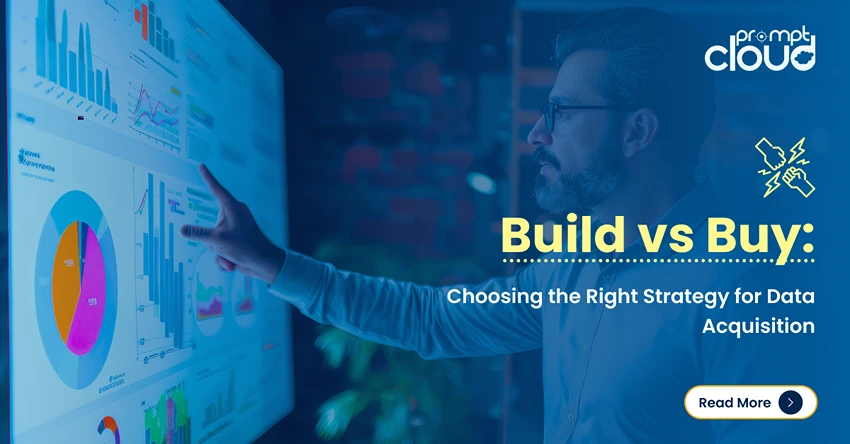Launched more than 15 years ago, Google Maps has evolved a lot and finds multiple uses besides how to get from point A to point B. Its most common offerings remain satellite imagery, aerial photographs, real-time traffic maps, and route planning via cars, bikes, public transport, and on foot. However, it is also heavily used for finding local businesses and learning more about them. Web scraping google maps helps businesses aggregate local business data.
Let’s say you have moved to a new place and need to find a good barbershop nearby. The most common thing to do would be to type the keyword “barbershop” in google maps and find the ones that are in your budget and also have the best reviews. Maps also let people find the timings when a shop or service may be open and even lets one edit the information in case of changes. All these data points along with the valuable customer reviews can prove very helpful if one can collate the data properly and store it in a usable format.
Google Maps is made up of more than 20 Petabytes of data, and a large part of it is made up of the millions of small businesses across towns and cities. Since almost 13% of all searches on Google are related to its maps, such a large(and ever-growing) dataset is not a surprise. This massive dataset and user-base have together helped it in capturing almost 67% of the navigation app market (as of 2018). Web scraping google maps helps extract data sources from Google.
Data-Points to be Extracted by Web Scraping Google Maps
If you are going to take a shot at web scraping Google Maps, the data points that can be extracted would be your main attraction. For almost any establishment, Google Maps provides a set of information. Whether you are looking for a service like a laundry, or for a shop that sells cakes, you would usually have all these data points:
a) Name of the Business
b) Ratings
c) Number of Reviews
d) Price Range
e) Type of establishment
f) The about Section–
g) Complete Address
h) Business Timings
i) Phone Number
j) Website, if present
k) Popular Timings (in the day)
l) Photos
m) Reviews
There may be other data points in case a business has added those or if individuals have updated them. Many of the data-points mentioned above can also be missing in case no one has updated them yet. Google Maps uses its Local Guides program to help encourage users to upload photos and update the information of establishments that they frequently visit. This way the dataset keeps getting updated in real-time.
It is not just new data-points that get added to existing establishments, but even new businesses get listed on Google Maps frequently. Web scraping google maps helps extract business listings and other feeds quickly. Certain information also gets updated from time to time due to reasons like seasonal changes, or natural calamity. One such example is the lockdown that caused many businesses to change their timings or introduce other rules. Many businesses updated their information during COVID and this helped people a great deal.
How Can you Benefit from Local Business Data from Google Maps
Local Business Data can prove to be very valuable if used in the right manner. It can answer questions that are solvable only through data:
1) Market Research
Local Business Data can help companies find solutions to many problems through market research. For example, a fast-food company can use local business data to find which areas of the city have more fast food joints. This information would indicate that those areas are popular among foodies. On the flip side, one could use the Local Business Data to find which areas have fewer food joints and open their new restaurant there.
Different data-points can be used by businesses to figure out things like the type of crowd in a location, their price sensitivity, their likes and dislikes, and the supply and demand gap. The data from local businesses can be used indirectly as well. For example, suppose you want to open a tour and travel company, but you are unsure of the most popular places in the city, You can use local business data to find out the locations that have the most popular attractions, and set those as your common routes.
2) Data Aggregation
Aggregating any form of data can provide a wider picture when looked onto as a whole. The same goes for business data. Data harvesting and aggregation for certain types of businesses can help decode underlying problems, points that are being missed, the scope of new business entry, and more. Aggregated data from different businesses on Google Maps can open doors that information from a single business can’t.
For example, you want to start a hyperlocal delivery service and want to collaborate with the most popular shops and service providers in the vicinity. You can use Google Maps data to sort all businesses by ratings and reviews and then start picking up your choices from the top.
3) Sentiment Analysis and Maintaining Brand Image
Today the public perception about a business is just as important as the products it sells. You can keep track of the brand image of any business by tracking its latest reviews on different platforms. Local Business Data from Google Maps contains thousands of reviews for millions of businesses. This data not only provides a great data-set for performing sentiment-analysis but can also help businesses analyze what they are getting right and where they are missing the mark. Web scraping google maps help extract the required data feeds.
Specific customer reviews can be analyzed individually, but for those who want to analyze thousands of reviews, sort them based on whether they are positive, negative, or neutral and extract usable data from them– scraping the data from Google Maps is the best option.
4) Competitive Analysis
Having insights into your competitors is just as important as having your own house in order. This is the reason why companies may want to aggregate data from businesses similar to theirs. Such data can be easily obtainable through Google Maps. This data can then be used to gain insights into the pricing strategies, opening and closing timings, add-on services, customer perception, and a lot more. This information can in turn be used to figure out the room for improvement and thus make data-backed business decisions.
How Can You Get the Data
There are multiple ways in which you can fetch information related to local businesses from Google Maps, including a way which is authorized by Google itself:
Google Maps API- Google Provides various APIs that can be used to extract information related to places on its maps. The APIs can be used for free if the user follows certain guidelines that have been laid down. Otherwise, you will have to pay a certain amount for every 1000 calls to each API. While the costs may not look like a lot, they could add up as you try to fetch more information across more locations, or as you try to refresh the information frequently.
Writing your Code- Writing your code to scrape a website like Google Maps can prove to be quite challenging. This is because the user interface gets updated frequently, and different types of businesses have their listings in different formats, often sporting different data points and features. There’s also a risk of getting blacklisted in case you end up hitting multiple maps webpages from the same IP in a very short period. Creating a web scraping solution that would read the information related to local businesses at different locations and update them in real-time would not only be difficult and expensive to create but would also come with the added overhead of infrastructure setup and maintenance.
Paid/unpaid Software Solutions- Most of these solutions are used by companies where the business team (which usually has little coding knowledge), takes care of the data scraping requirements. While they can be used with some training, you are bound to run into roadblocks for lack of different features. Also re-learning for new employees as well as handling the infrastructure and configuration changes from time to time will eat up into the main priority of the business team.
DaaS Solutions- DaaS solutions providers are end-to-end data-based solution providers that usually take care of most of the stages in the data workflow, leaving you with just 2 things:
a) Providing the requirements
b) Integrating the data
The prices are usually based on the amount of data that needs to be scraped and hence you shall only be paying for the number of data points and the number of businesses that you need information for. In the long run, you would only be paying for those data points that have been updated– thus driving down costs.
Why PromptCloud?
Our fully-managed, enterprise-grade, end-to-end solution can help you in getting all the data-points that you require from businesses in any location of the world. Any type of custom requirements such as filters for certain types of businesses can also be implemented if required.
We provide a low latency solution that refreshes the data in real-time. Our fully managed data extraction services also takes care of the infrastructure setup and maintenance. Such a complete cloud-based solution also takes into account the different integration requirements that customers may have. Thus we provide the data in formats such as CSV, XML, or JSON via means like S3, DropBox, or REST APIs. Your journey to scrape data from Google Maps and integrate it into your business workflow can become a seamless upgrade through our DaaS solution.



















